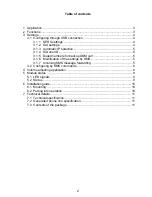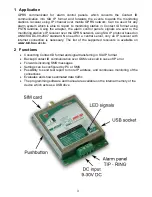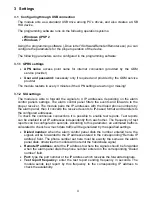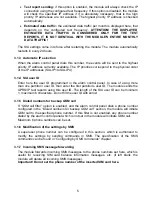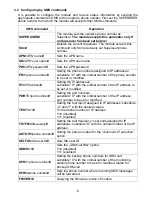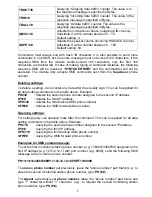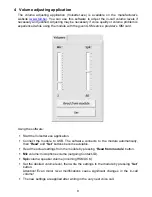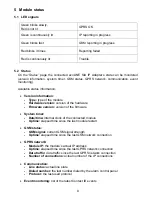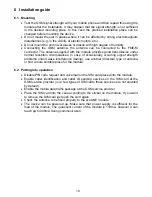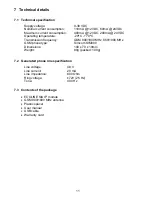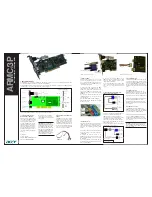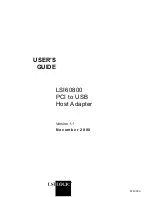
4
3 Settings
3.1 Configuring through USB connection
The module acts as a standard USB drive among PC’s drives, and also creates a USB
HID device.
The programming software runs on the following operation systems:
Windows XP SP2
Windows 7
Using the programming software („Drive letter”:\Software\Remoter\Remoter.exe) you can
configure the parameters for the proper operation of the device.
The following parameters can be configured in the programming software:
3.1.1 GPRS settings
APN name
: access point name for internet connection (provided by the GSM
service provider)
User and password:
necessary only if required and provided by the GSM service
provider
The module restarts in every 3 minutes if the APN settings are wrong or missing!
3.1.2 SIA settings
The module is able to forward the signals to 4 IP addresses, depending on the alarm
control panel’s settings. The alarm control panel filters the events and forwards to the
proper receiver. The module pairs the IP addresses with the dialed phone numbers by
the alarm panel, then it converts the received events to IP-based format and transfers to
the configured addresses.
To check the continuous connections it is possible to enable test reports. Test reports
can be enabled to all IP addresses independently from each other. The frequency of test
reports can be configured in seconds. According to this parameter, an estimated traffic is
calculated to check how much data traffic will be generated by the specified settings.
Dialed number:
when the alarm control panel dials the number entered here, the
signals will be forwarded to the IP address entered in the corresponding “Remote IP
address” field. The phone number set here must be exactly the same as the alarm
panel dials, otherwise the module will not emit the handshake signal.
Remote IP address:
enter the IP address to where the signals should be forwarded
when the alarm panel dials the phone number entered in the corresponding “Dialed
number” field.
Port:
type the port number of the IP address which receives the forwarded signals.
Test report frequency:
enter the test report sending frequency in seconds. The
module sends test report by this frequency to the corresponding IP address to
check the availability.


